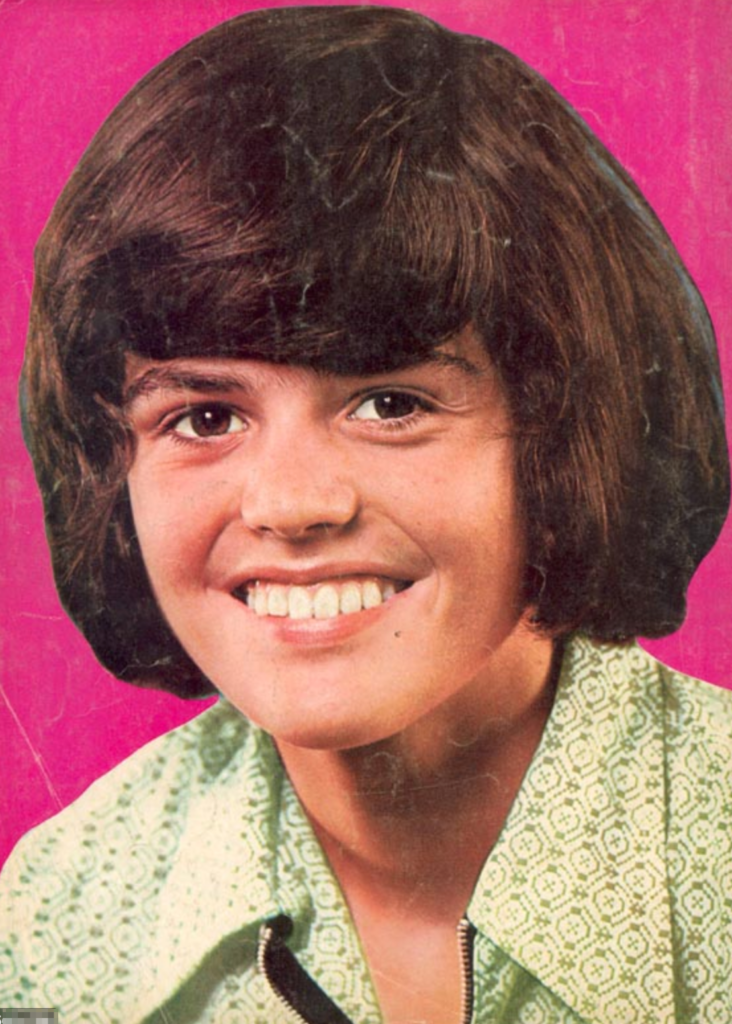When it comes to handling the coronavirus pandemic crisis, Minnesota Governor Tim Walz, who issued a stay at home order on March 25, has earned 82% approval ratings, compared to 34% for President Trump, according to a Survey USA/KSTP-TV survey. Up until this point, stay at home orders seem to have actually been a political benefit to leaders courageous and wise enough to invoke them, not a burden. For instance as of early May, only about 20% of Minnesotans wanted the Governor’s stay at home order lifted.
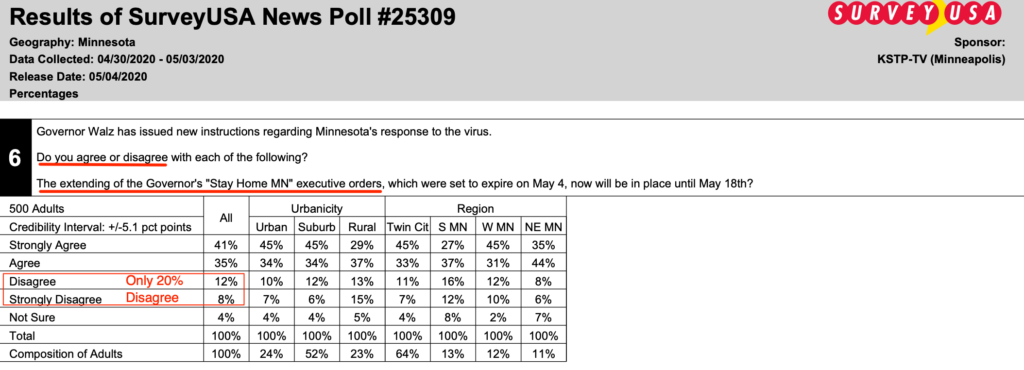
But that is almost sure to change over time. In part because of President’s Trump’s constant call to ease restrictions, and calls for the public to resist them, we’re already seeing Americans getting more antsy, as evidenced by a recent Gallup poll that shows the number of people avoiding small gatherings decreasing by four points among Democrats, 10 points among Independents, and 16 points among Republicans.
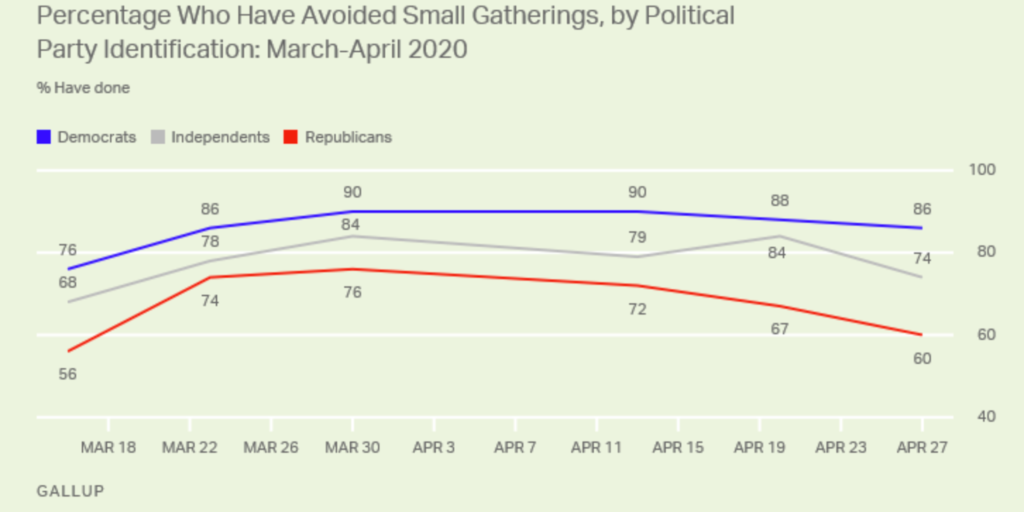
Also a Unacast report card measuring social distancing activity, which earlier gave Minnesota an “A” grade, has downgraded Minnesota to a “D-” grade, a crushing blow to the earnest promoters of Minnesota exceptionalism.
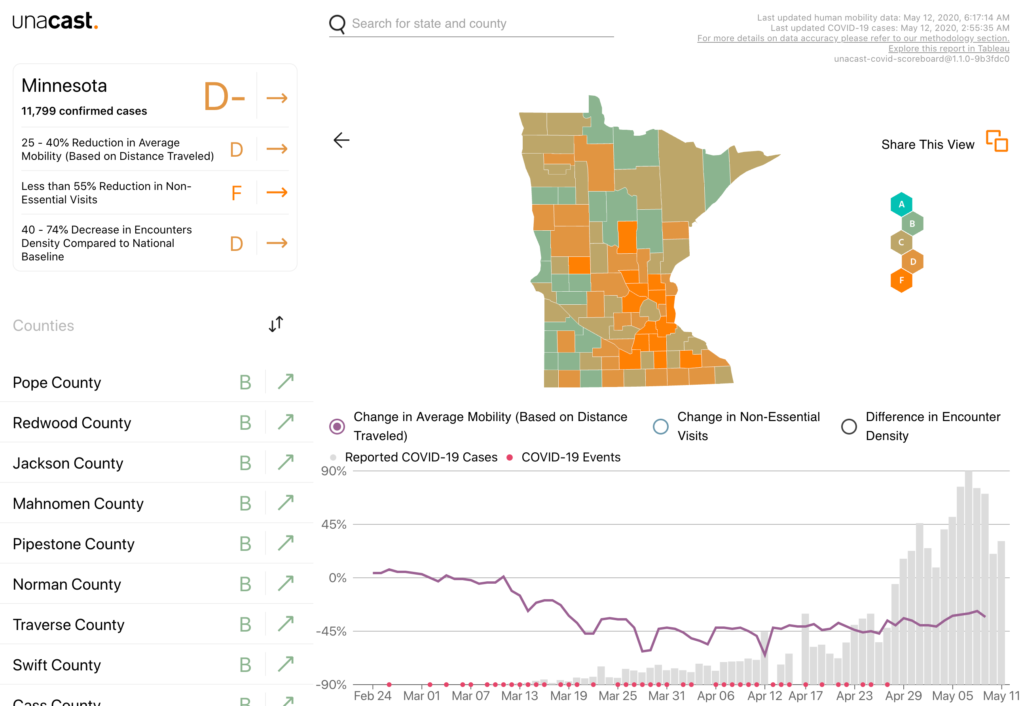
Picking up on that sentiment, and following their President’s call to “LIBERATE Minnesota” from pandemic protections, Minnesota House Republicans are increasingly criticizing Walz’s stay at home order, and using a bonding bill as ransom to get it lifted. I’m not convinced “we’re fighting to stimulate the economy by blocking job-creating bonding projects” is the most persuasive argument, but that’s what they’re going with.
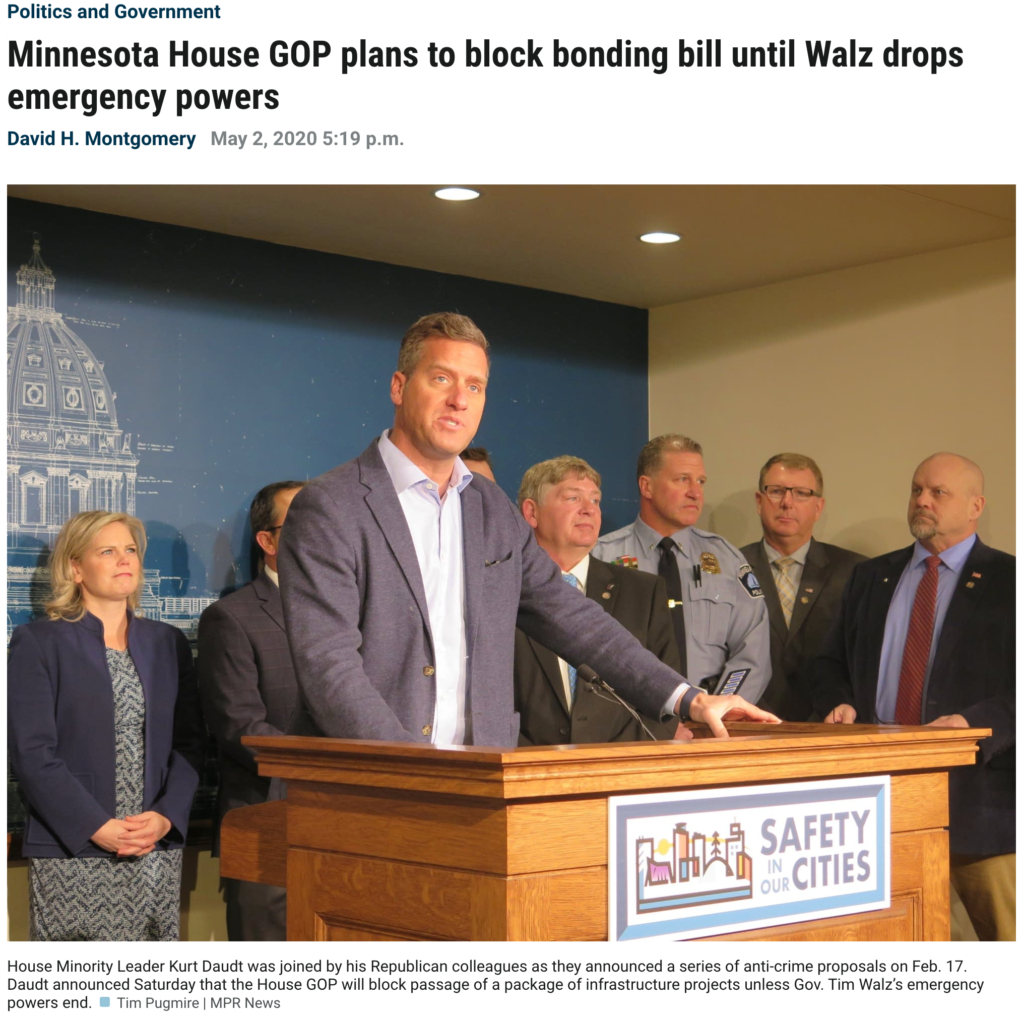
So, should Governor Walz further loosen distancing rules? As of May 6, the experts at the Harvard Global Health Institute say that only nine states have done enough to warrant loosening restrictions — Alaska, Utah, Hawaii, North Dakota, Oregon, Montana, West Virgina, and Wyoming. The Harvard analysts find that Minnesota is not one of them, another blow to Minnesota exceptionalism. Specifically, experts find that Minnesota needs to be doing more testing and seeing lower rates of infection from the tests.
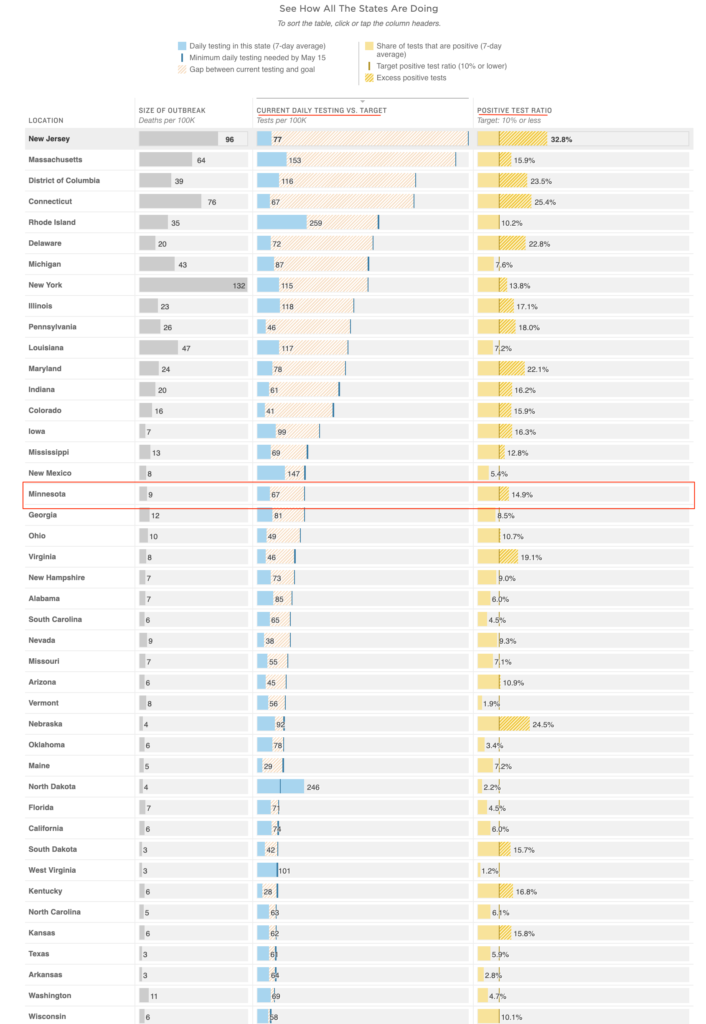
There might be some modest steps Walz can take to ease the political pressure and help Minnesotans feel like they’re making progress. I’m not remotely qualified to identify them, but for what little it’s worth here is some wholly uninformed food-for-thought anyway:
For those with low risk factors — people who are young and healthy and are not essential workers — maybe the good Governor could allow masked and socially distanced haircuts. (Can you tell my new Donny Osmond look is starting to get to me?)
For the same group, maybe Walz could allow masked and distanced visits with members of the immediate family — offspring, siblings, and parents. (Can you tell I miss my daughter?)
Those two things seem to be particularly stressful to people. While far from risk-free, they aren’t recklessly risky. These kinds of small adjustments might help people (i.e. me) become more patient and compliant when it comes to more consequential rules.
Overall, Walz should listen to experts and largely keep stay at home orders in place until the experts’ guidelines are met. A new spike in infections and deaths will seriously harm consumer confidence and the economy, and that shouldn’t be risked. At this stage, most Minnesotans are not likely to flock back to bars, restaurants, malls and large entertainment venues anyway, regardless of what Walz allows.
But maybe a little off the top would be okay?
